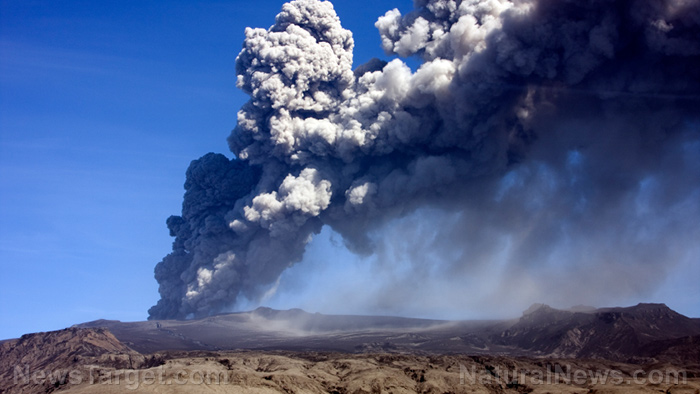You don’t have to be a geologist to understand that an earthquake in the vicinity of a volcano could be a disaster waiting to happen, but what if there were nearly 900 quakes near a supervolcano?
That is the situation that is playing out right now in Yellowstone National Park, where 878 earthquakes have struck since June 12. Most of the quakes had a very low magnitude, but the strongest one, which was recorded on June 15, had a magnitude of 4.4. The park rests atop one of the most dangerous supervolcanoes on the planet, prompting fears that it could be about to blow. Any doubts about its active state can be dispelled by the sight of Old Faithful, shooting water up every few hours.
While earthquake swarms are not unusual in Yellowstone, the week of June 12 saw the highest number of quakes to be noted in a single week in five years. Although the risk of eruption remains low overall and the volcano alert level has not been raised from green, it is believed that if it does erupt, it could be 1,000 times as powerful as the one at Mount St. Helens in 1980.
This particular volcano has been dormant for more than 70,000 years, but that does not mean it won’t erupt again eventually. It’s impossible to predict when that might occur, but seismic activity can signal a potential eruption. Four years ago, researchers discovered that the underground magma chamber of the volcano was more than twice as big as previously believed, encompassing an area of land that measures 56 by 19 miles.
Huge ash cloud could devastate Western U.S.
Should the volcano erupt, the resultant ash, smoke and lava would most likely cause widespread devastation in this country and also have an effect on the rest of the world. It is believed that an eruption there would see molten lava hotter than 1,000 degrees, but the biggest concern is the ash. Scientists believe it could emit ash that extends over 500 miles, stretching from California all the way to Texas and Louisiana. It would likely leave as many as four inches of gray ash on the ground, destroying Midwestern crops.
It could also spew out gases like sulfur dioxide, creating acid rain and leading to global cooling by reflecting the sun from the Earth. While it might not wipe out human life entirely, it would certainly create a lot of damage across the western side of our nation.
Another concern in that part of the country is a gigantic well of molten carbon that was discovered under the park earlier this year. Spanning 700,000 square miles, this section of upper mantle is about the size of Mexico and creates specific seismic patterns as solid carbonates melt. If a significant amount of the gases in this deposit are suddenly released into our atmosphere, it could spur an environmental disaster akin to nuclear warfare.
As for the Yellowstone supervolcano, it has only had three major eruptions in the last 2 million years. Geologists say that other signs would also likely occur if the volcano was on the verge of blowing, such as big changes in the surface deformation, gas output, and the hydrothermal system.
Even though this latest round of earthquakes will likely – and hopefully – amount to nothing just like similar earthquake swarms in the past, the news serves as a reminder that it never hurts to prepare for events like this one. Waiting for more signs of impending doom, whether it’s a volcano or another type of threat, will place you in competition with other people for scarce resources, so the time to start stocking up and making a plan is now.
A path of our forefathers that replicates their living style and implies them on the reality where disastrous things might happen every single day.A textbook that aims to exclude you from the list of majority that do not have the skills to survive without electricity and unlimited drinking water.Learn more HERE.
by Isabelle Z.



